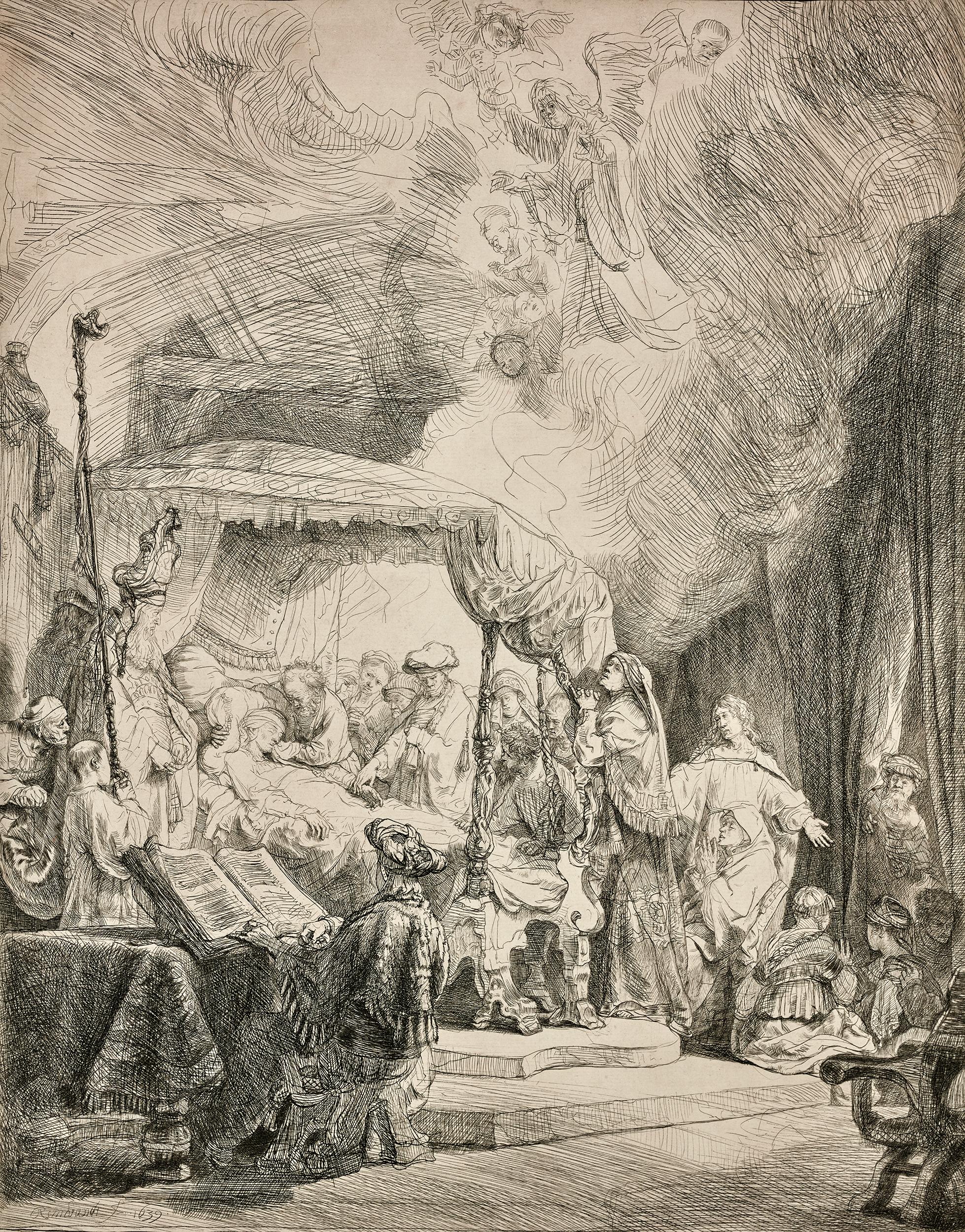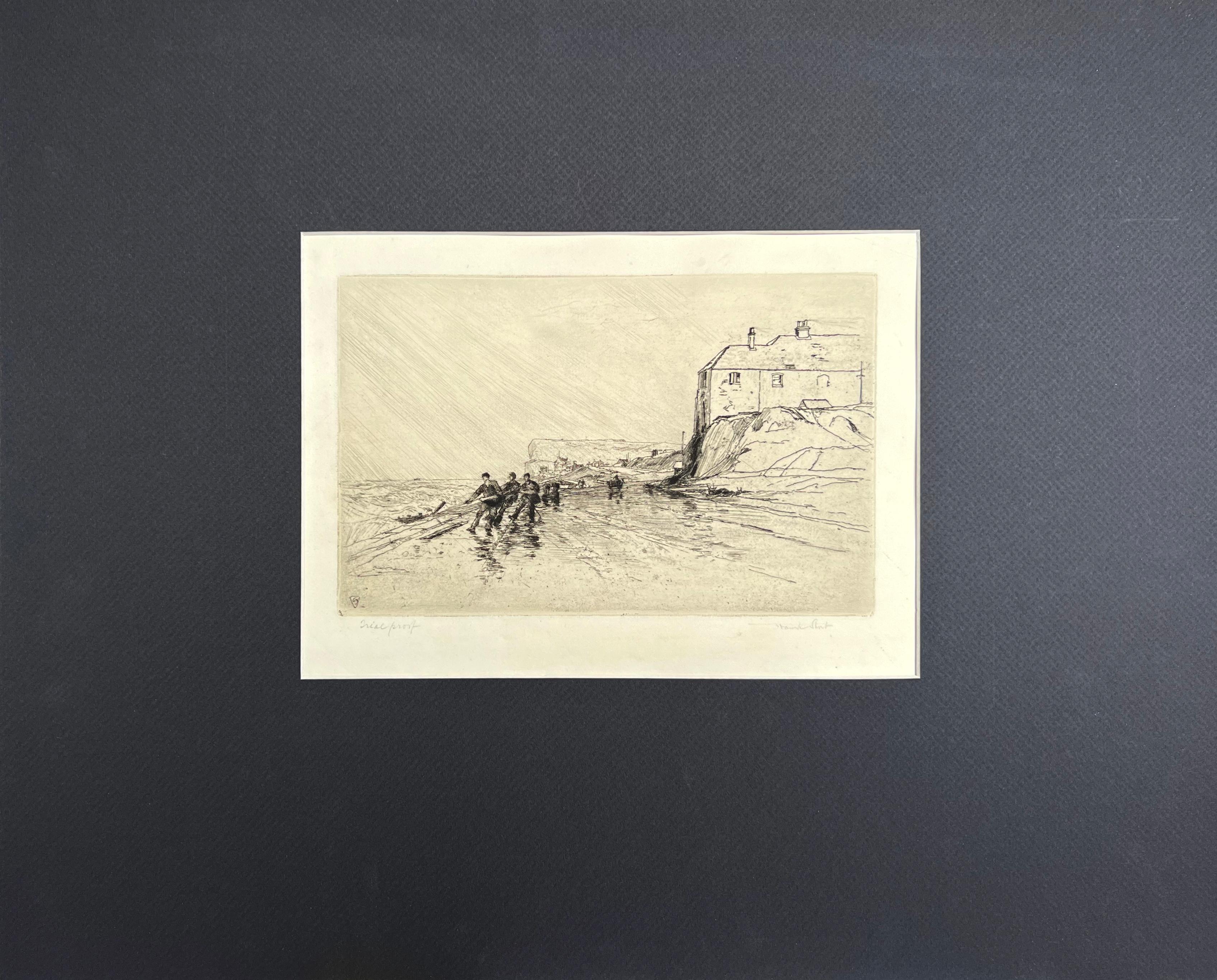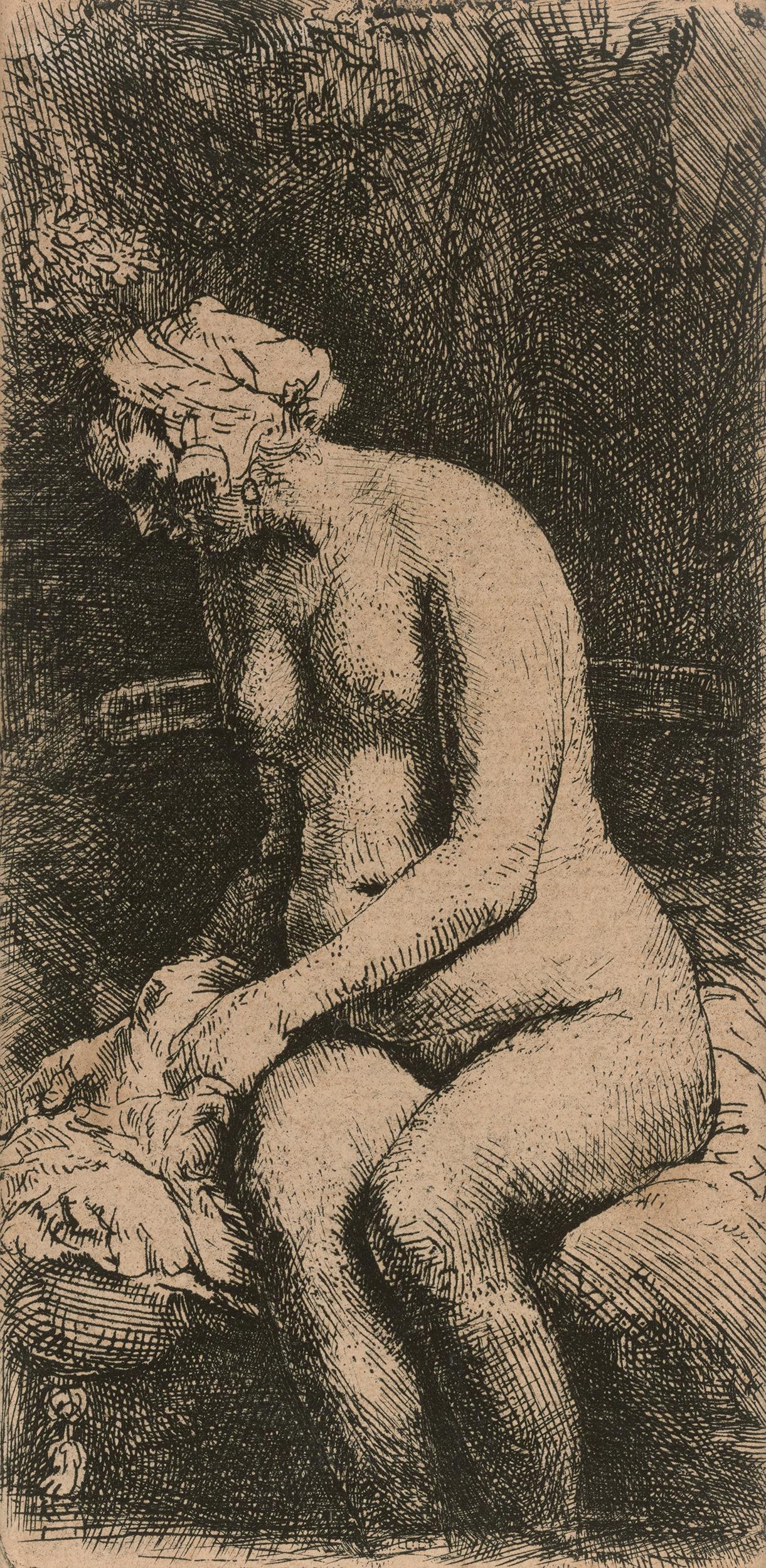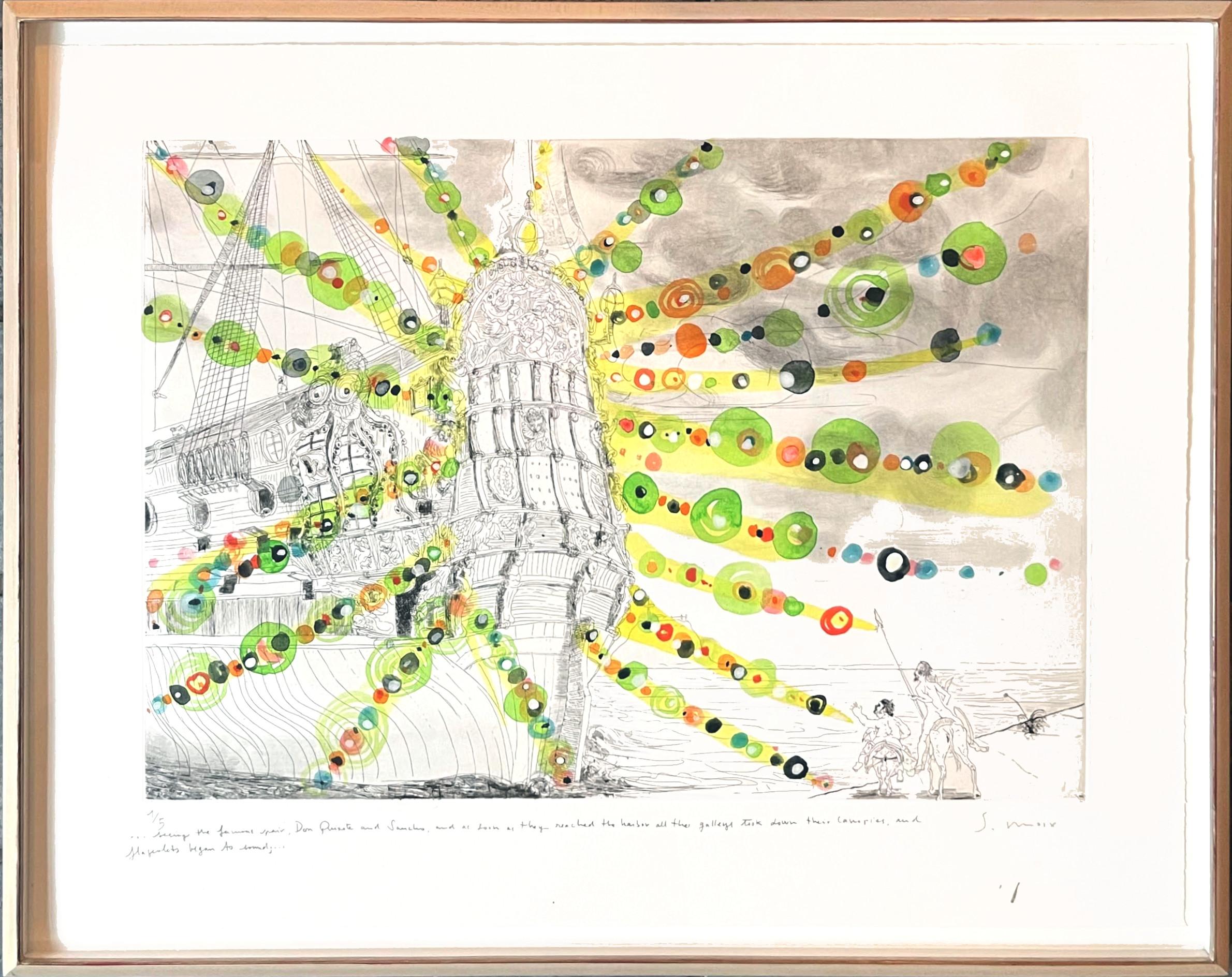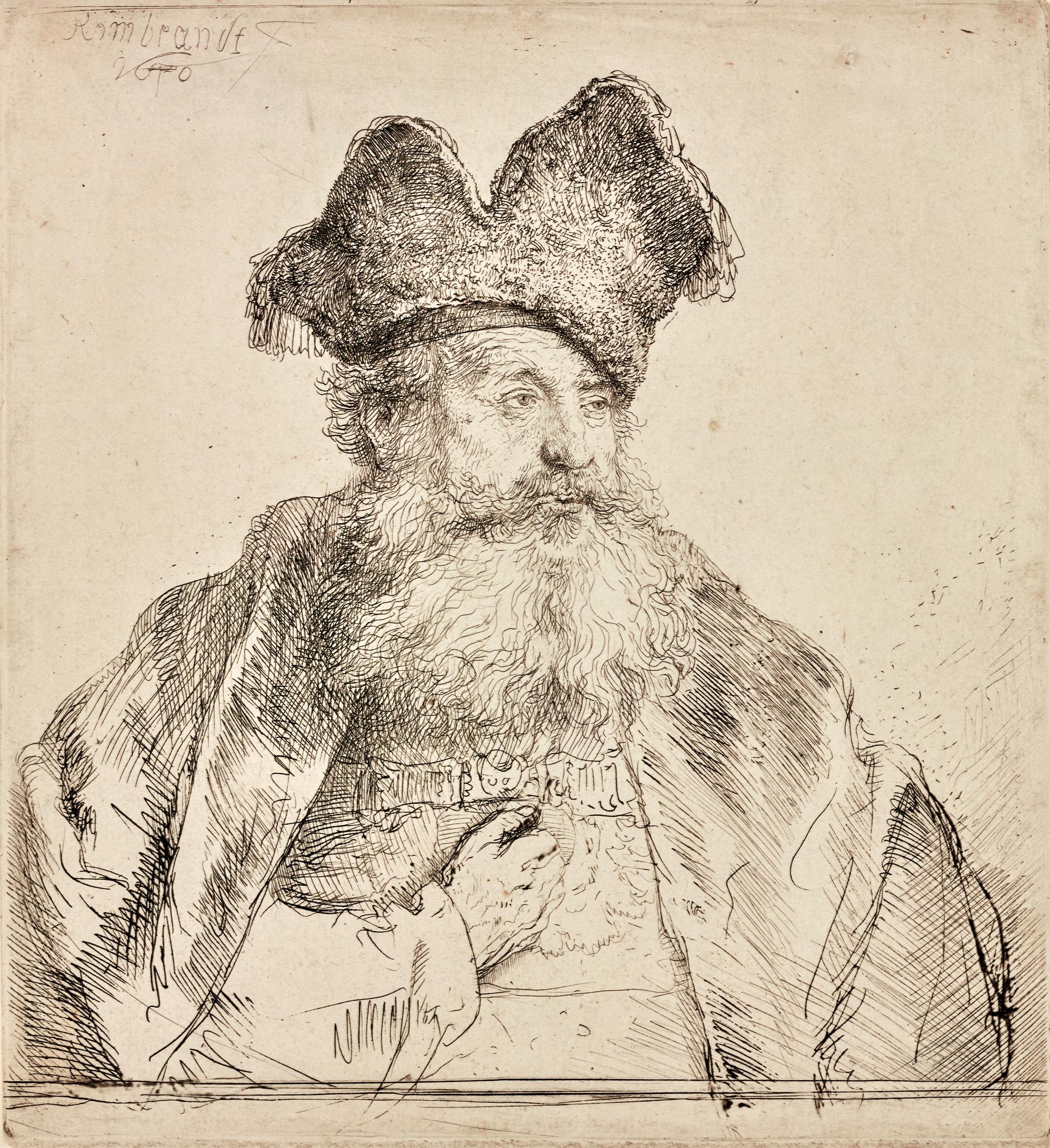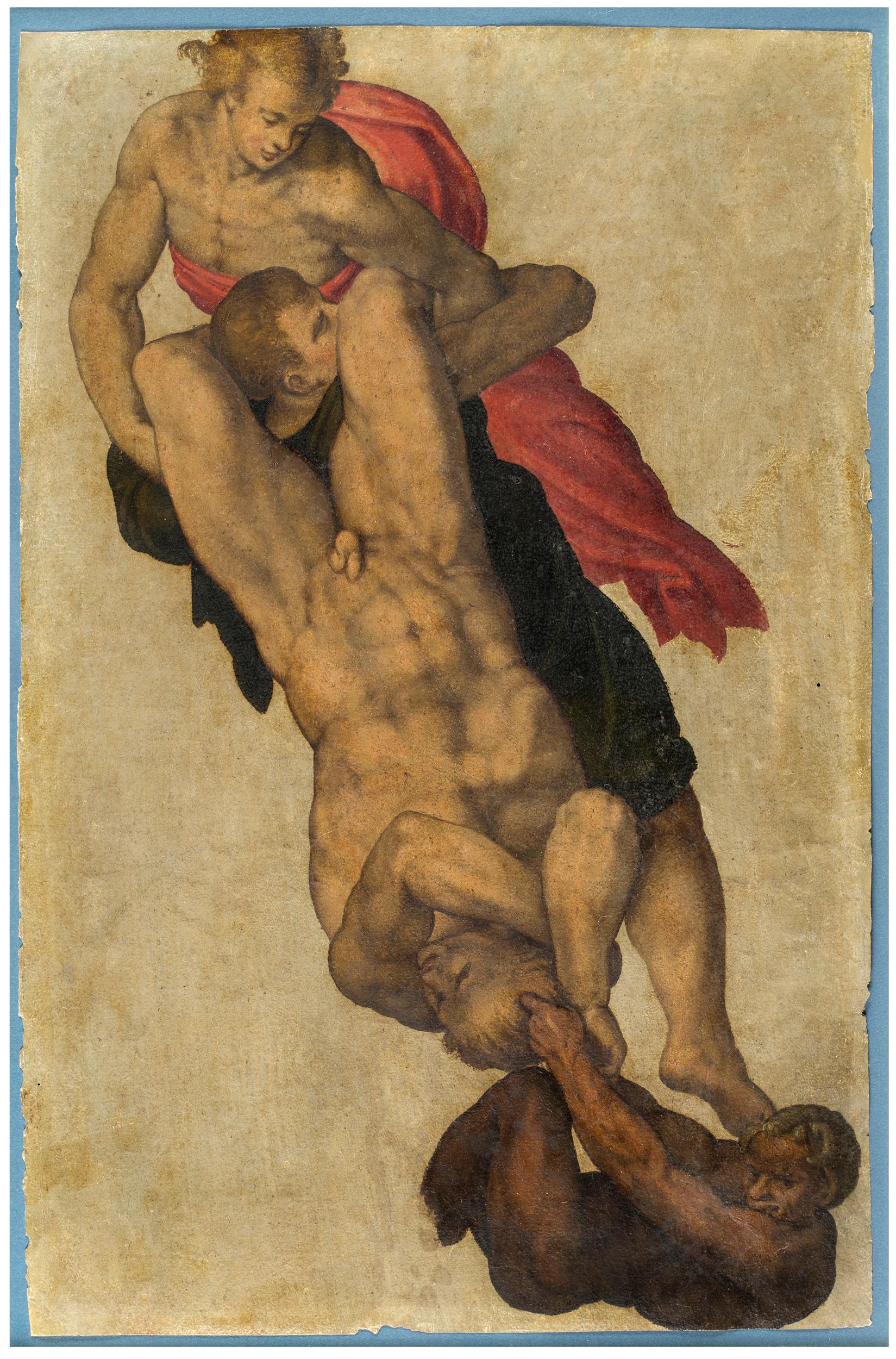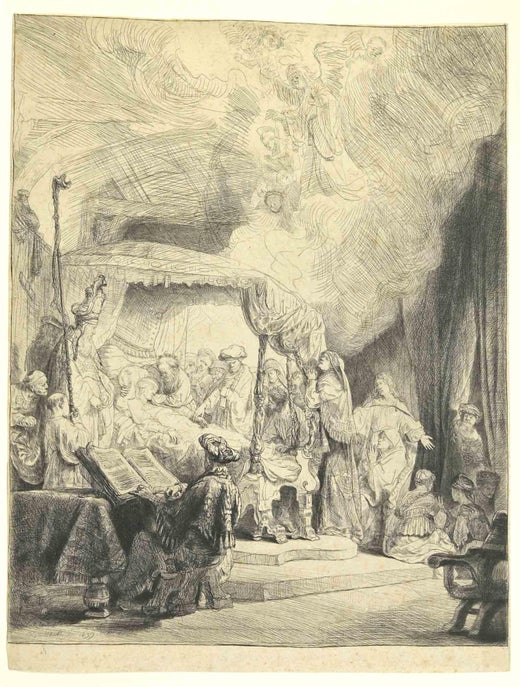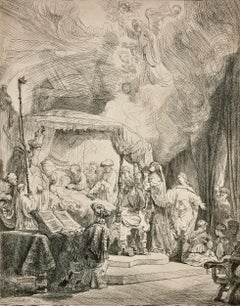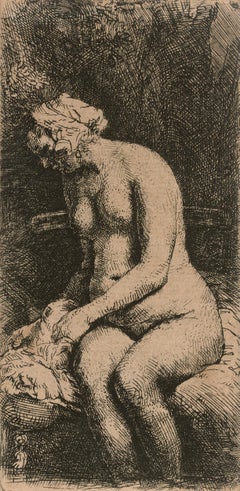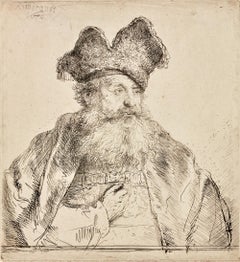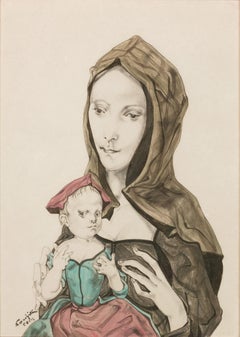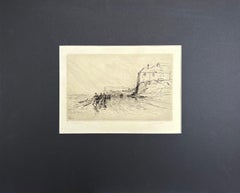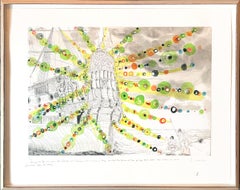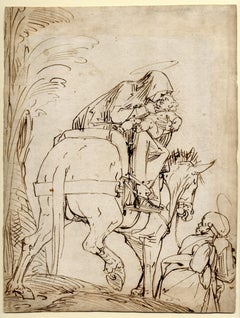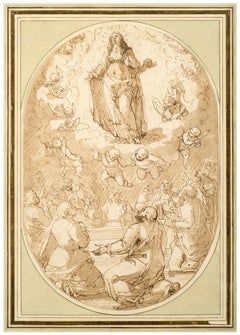Objekte ähnlich wie Jan Lutma, Goldsmith by Rembrandt van Rijn
Möchten Sie mehr Bilder oder Videos?
Zusätzliche Bilder oder Videos von dem*der Anbieter*in anfordern
1 von 8
Rembrandt van RijnJan Lutma, Goldsmith by Rembrandt van RijnCirca 1656
Circa 1656
34.060,48 €
Versand
Angebot wird abgerufen …Das Versprechen von 1stDibs:
Authentizitätsgarantie,
Geld-Zurück-Garantie,
Stornierung innerhalb von 24 Stunden
Angaben zum Objekt
Rembrandt van Rijn
1606-1669 Dutch
Jan Lutma, The Goldsmith
Etching, engraving, and drypoint on paper
New Hollstein’s second state of five
Signed and dated “Rembrandt / F. 1656” (upper center)
This monumental etching is a highly significant work by the Dutch Old Master Rembrandt van Rijn (1606–1669). It is one of nearly 300 authenticated prints that Rembrandt produced during his lifetime, demonstrating his mastery of the intaglio printmaking technique. The artist's innovative use of etching, drypoint and engraving to create a wide range of tonal effects was unprecedented during his time and revolutionized the world of printmaking.
Here, Rembrandt renders his subject, Jan Lutma, with a sliver of a smile, resting comfortably in his chair. Master gold and silversmith Johannes Lutma was a well-known figure in Amsterdam society who befriended many artists, including Rembrandt. In this sensitive portrait, the elderly craftsman is seated in an elaborate carved armchair, surrounded by the tools and creations of his trade, including a hammer and a pot containing punches along with a chased-silver bowl.
During his lifetime, Lutma received several important official commissions, though he is best known for the tulip beaker he created in 1652 for Nicolaas Tulp, whose anatomy lesson was immortalized in a painting by Rembrandt in 1632. In 1656, Lutma recovered from a temporary deterioration of his eyesight. It is thought that he may have commissioned the print as an announcement that he was still (or again) working in the craft that had brought him fame and fortune.
Rembrandt utilizes a subtle play of warm, diffused light from the window to cast elegant naturalistic shadows across Lutma’s countenance. He added drypoint over an already dense web of finely etched lines, creating depth and dimension. By altering the direction and strength of the lines, he created subtle distinctions between the deep velvety black of his sitter’s clothing and the glow of the light filtering from the top of the room. This unique etching showcases Rembrandt’s mastery over rendering light and shadow in etching and engraving.
The son of a miller, Rembrandt van Rijn is believed to have been born in Leiden on July 15, 1606. He studied first at the Latin School and was then enrolled at the University of Leiden at the age of 14. He soon left to study art—first with a local master, Jacob van Swanenburch, and then, in Amsterdam, with Pieter Lastman, known for his historical paintings. Rembrandt was an exceptionally gifted student and mastered his craft in a mere six months. At 22 years old, he returned to Leiden and was soon so highly regarded that he was able to take students of his own.
Though known today primarily for his paintings, Rembrandt’s fame spread outside of the Netherlands thanks to his etchings. He made hundreds of etchings over the course of his career from 1626 until 1660, the year he was forced to sell his presses. He created etchings of numerous subjects, including self-portraits, biblical subjects, saints and allegories, and his work was avidly admired and collected, even during his lifetime.
According to New Hollstein, this etching is likely the highly desirable second/third state of this rendering based on the addition of an inscription reading “F. Lutma Ex.” in the densely worked area at the lower right. Versions of this etching reside in several museums, including the Metropolitan Museum of Art in New York, the Uffizi Gallery in Florence, the Art Institute of Chicago, and more.
Etched circa 1656
Paper: 7 3/4" high x 5 3/4" wide (19.69 x 14.61 cm)
Frame: 20 1/4" high x 16 1/4" wide x 1" deep (51.44 x 41.28 x 2.54 cm)
References:
Bartsch 276
The New Hollstein Dutch 293, Second state (of V)
Provenance:
Private collection, The Netherlands
M.S. Rau, New Orleans
- Schöpfer*in:Rembrandt van Rijn (1606 - 1669, Niederländisch)
- Entstehungsjahr:Circa 1656
- Maße:Höhe: 51,44 cm (20,25 in)Breite: 41,28 cm (16,25 in)Tiefe: 2,54 cm (1 in)
- Medium:
- Bewegung und Stil:
- Zeitalter:
- Zustand:
- Galeriestandort:New Orleans, LA
- Referenznummer:Anbieter*in: 32-10901stDibs: LU18616516042
Rembrandt van Rijn
Rembrandt war der einflussreichste niederländische Maler des 17. Jahrhunderts. Nach frühen Erfolgen als Porträtmaler wurde sein Leben von finanziellen Schwierigkeiten und persönlichen Tragödien überschattet. Er malte weiterhin Porträts und entwickelte Radierungen. Rembrandts Porträts seiner Zeitgenossen, Selbstporträts und Illustrationen von Bibelszenen gelten als seine größten schöpferischen Triumphe. Seine Self-Portraits formen eine einzigartige und intime Autobiographie, in der sich der Künstler ohne Eitelkeit und mit größter Aufrichtigkeit selbst porträtiert. Wie viele Künstler des Goldenen Zeitalters in den Niederlanden, z. B. Jan Vermeer aus Delft, war auch Rembrandt ein begeisterter Kunstsammler und -händler. Rembrandt ging zwar nie ins Ausland, wurde aber von den Werken italienischer Meister und niederländischer Künstler, die in Italien studiert hatten, wie Pieter Lastman, den Utrechter Caravaggisten, dem flämischen Barock und Peter Paul Rubens, stark beeinflusst. Rembrandts wichtigster Beitrag zur Geschichte der Druckgrafik war seine Umwandlung der Radierung von einer relativ neuen Reproduktionstechnik in eine echte Kunstform, zusammen mit Jacques Callot. Sein Ruf als der größte Radierer in der Geschichte des Mediums wurde schon zu seinen Lebzeiten begründet und seitdem nie wieder in Frage gestellt. Nur wenige seiner Gemälde verließen zu seinen Lebzeiten die Niederländische Republik, aber seine Drucke wurden in ganz Europa verbreitet, und sein breiter Ruf beruhte zunächst allein auf ihnen.
Anbieterinformationen
5,0
Geprüfte*r Anbieter*in
Jede*r Anbieter*in erfüllt strenge Standards bezüglich Echtheit und Zuverlässigkeit
Gründungsjahr 1912
1stDibs-Anbieter*in seit 2013
16 Verkäufe auf 1stDibs
Typische Antwortzeit: 9 Stunde
- VersandAngebot wird abgerufen …Versand von: New Orleans, LA
- Rückgabebedingungen
Einige Inhalte dieser Seite wurden automatisch übersetzt. Daher kann 1stDibs nicht die Richtigkeit der Übersetzungen garantieren. Englisch ist die Standardsprache dieser Website.
Authentizitätsgarantie
Im unwahrscheinlichen Fall eines Problems mit der Echtheit eines Objekts kontaktieren Sie uns bitte innerhalb von 1 Jahr für eine volle Rückerstattung. DetailsGeld-Zurück-Garantie
Wenn Ihr Objekt nicht der Beschreibung entspricht, beim Transport beschädigt wurde oder nicht ankommt, kontaktieren Sie uns bitte innerhalb von 7 Tagen für eine vollständige Rückerstattung. DetailsStornierung innerhalb von 24 Stunden
Sie können Ihren Kauf jederzeit innerhalb von 24 Stunden stornieren, ohne jegliche Gründe dafür angeben zu müssen.Geprüfte Anbieter*innen
Unsere Anbieter*innen unterliegen strengen Dienstleistungs- und Qualitätsstandards, wodurch wir die Seriosität unserer Angebote gewährleisten können.Preisgarantie
Wenn Sie feststellen, dass ein*e Anbieter*in dasselbe Objekt anderswo zu einem niedrigeren Preis anbietet, werden wir den Preis entsprechend anpassen.Zuverlässige weltweite Lieferung
Unsere erstklassigen Versandunternehmen bieten spezielle Versandoptionen weltweit, einschließlich individueller Lieferung.Mehr von diesem*dieser Anbieter*in
Alle anzeigenDer Tod der Jungfrau von Rembrandt van Rijn
Von Rembrandt van Rijn
Rembrandt van Rijn
1606-1669 Niederländisch
Der Tod der Jungfrau
Radierung und Kaltnadel auf Büttenpapier
Zustand II von V
Signiert und datiert "Rembrandt f. 1639" (links unten)
...
Kategorie
17. Jahrhundert, Alte Meister, Figurative Zeichnungen und Aquarelle
Materialien
Büttenpapier, Kaltnadelradierung, Radierung
Frau, die ihre Füße in einer Brooke badet, von Rembrandt van Rijn
Von Rembrandt van Rijn
Rembrandt van Rijn
1606-1669 Niederländisch
Frau badet ihre Füße in einem Bach
Radierung auf Papier
New Hollstein's 309, zweiter Zustand von II
Signiert und datiert "Rembrandt f. ...
Kategorie
17. Jahrhundert, Alte Meister, Figurative Zeichnungen und Aquarelle
Materialien
Radierung, Papier
Mann mit geteilter Kappe von Rembrandt van Rijn
Von Rembrandt van Rijn
Rembrandt van Rijn
1606-1669 Niederländisch
Mann mit geteilter Kappe
Radierung und Kaltnadel auf Papier
Erster Zustand von drei
Signiert "Rembrandt" (oben links)
Diese außergewöh...
Kategorie
17. Jahrhundert, Alte Meister, Figurative Zeichnungen und Aquarelle
Materialien
Radierung
Porträt einer Mutter und eines Kindes von Tsuguharu Foujita
Von Léonard Tsuguharu Foujita
Tsuguharu Foujita
1886-1968 Japanisch-Französisch
Porträt einer Mutter mit Kind
Signiert "Foujita / Paris" (unten links)
Tusche und Aquarell auf Papier
Als künstlerische Koryphäe...
Kategorie
20. Jahrhundert, Post-Impressionismus, Porträtzeichnungen und - aquarelle
Materialien
Papier, Tinte, Wasserfarbe
Vendedora von Diego Rivera
Von Diego Rivera
Diego Rivera
1886-1957 Mexikanisch
Vendedora
(Verkäufer)
Signiert und datiert (unten rechts)
Aquarell auf Reispapier
Diego Rivera gehört zu den bedeutendsten Künstlern des 20. Ja...
Kategorie
20. Jahrhundert, Post-Impressionismus, Figurative Zeichnungen und Aquarelle
Materialien
Wasserfarbe, Reispapier
Concours de Chiens au Promenade von Otto Eerelman
Von Otto Eerelman
Otto Eerelmann
1839-1926 Niederländisch
Concours de Chiens au Promenade
Aquarell auf Papier
Gezeichnet "O. Eerelman 1904" (unten links)
Dieses charmante Aquarell des berühmten ho...
Kategorie
Frühes 20. Jahrhundert, Post-Impressionismus, Figurative Zeichnungen und...
Materialien
Papier, Wasserfarbe
Das könnte Ihnen auch gefallen
ough Weather at Blatchington Pulling in the Fishing Nets an der englischen Küste
Von Sir Frank Short
Kaltnadelradierung einer Küstenszene mit Figuren, die ein Netz oder ein Boot aus dem Meer ziehen von Sir Francis (Frank) Job Short (Brite, 1857 - 1945)
Sir Frank Short, Royal Academy...
Kategorie
1870er, Impressionismus, Figurative Zeichnungen und Aquarelle
Materialien
Hadernpapier, Kaltnadelradierung, Radierung, Gouache
1.061 € Angebotspreis
20 % Rabatt
Seeing Don Quixote and Sancho etching, hand coloring & watercolor, signed Framed
Von Santi Moix
Santi Moix
Der Anblick von Don Quijote und Sancho ("das berühmte Paar"), ca. 2008
Kaltnadelradierung, Ätzung und Abrasion mit Handkolorierung mit Aquarell, zusammen mit Graphit-Anmer...
Kategorie
Anfang der 2000er, Zeitgenössisch, Figurative Zeichnungen und Aquarelle
Materialien
Mixed Media, Wasserfarbe, Grafit, Kaltnadelradierung, Radierung
Der Flug nach Ägypten
Beschriftet: 3. una Madonna che va in Egitto, verso, und Madonna che va in Egitto, recto
Provenienz:
Privatsammlung, UK, seit 1999
Diese ausdrucksstarke und kühn ausgeführte Zeich...
Kategorie
16. Jahrhundert, Alte Meister, Figurative Zeichnungen und Aquarelle
Materialien
Kreide, Tinte, Stift, Papier
Die Himmelfahrt der Jungfrau Maria
Provenienz:
Unbekannte Sammlermarke "D.G.R", rechts unten (Lugt 757b)
Wilhelm Suida (1877-1959), New York; durch Abstammung zu:
Robert L. und Bertina Suida Manning, New York, bis 19...
Kategorie
16. Jahrhundert, Alte Meister, Figurative Zeichnungen und Aquarelle
Materialien
Papier, Tinte, Stift
Studie nach Michelangelos „Der letzte Gerichtsspruch“
Von Michelangelo Buonarroti
Italienische Schule, 16. Jahrhundert
Provenienz:
Privatsammlung, New York
Diese faszinierende Zeichnung ist eine Studie eines anonymen italienischen Künstlers aus dem 16. Jahrhund...
Kategorie
16. Jahrhundert, Alte Meister, Figurative Zeichnungen und Aquarelle
Materialien
Papier, Gouache
The Assumption of Mary Magdalene, Italienische Schule, 16. Jahrhundert
Bräunliche Tusche und gräuliche Tuschelavierung mit weißer Erhöhung auf handgeschöpftem cremefarbenem Bütten, 10 5/8 x 8 1/4 Zoll (267 x 208 mm) (Matrix). Vereinzelte kleine Verluste...
Kategorie
16. Jahrhundert, Alte Meister, Figurative Zeichnungen und Aquarelle
Materialien
Tinte, Büttenpapier, Büttenpapier
